

DFB laser diodes at 1651 nm and 1654 nm are used for methane detection. Please have a look at the key features, specifications and applications.
|
parameters
|
symbol
|
unit
|
minimum
|
typical
|
maximum
|
|---|---|---|---|---|---|
|
parameters
operating wavelength (at Top, Iop) |
symbol
λop |
unit
nm |
minimum
|
typical
1651 nm & 1654 nm |
maximum
|
|
parameters
optical output power (at λop) |
symbol
Pop |
unit
mW |
minimum
|
typical
8 |
maximum
|
|
parameters
operating current |
symbol
Iop |
unit
mA |
minimum
|
typical
70 |
maximum
|
|
parameters
operating voltage |
symbol
Vop |
unit
V |
minimum
|
typical
2 |
maximum
|
|
parameters
threshold current |
symbol
Ith |
unit
mA |
minimum
10 |
typical
20 |
maximum
30 |
|
parameters
side mode suppression ratio |
symbol
SMSR |
unit
dB |
minimum
|
typical
> 35 |
maximum
|
|
parameters
current tuning coefficient |
symbol
CI |
unit
nm / mA |
minimum
0.008 |
typical
0.012 |
maximum
0.015 |
|
parameters
temperature tuning coefficient |
symbol
CT |
unit
nm / K |
minimum
0.10 |
typical
0.11 |
maximum
0.14 |
|
parameters
operating chip temperature |
symbol
Top |
unit
°C |
minimum
+20 |
typical
+25 |
maximum
+45 |
|
parameters
operating case temperature (non-condensing) |
symbol
TC |
unit
°C |
minimum
-20 |
typical
+25 |
maximum
+55 |
|
parameters
storage temperature (non-condensing) |
symbol
TS |
unit
°C |
minimum
-40 |
typical
+20 |
maximum
+80 |
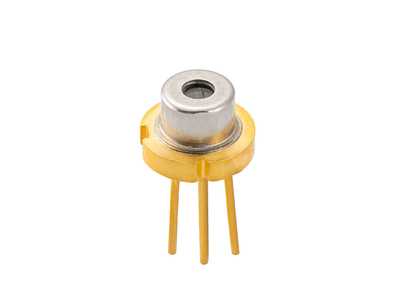
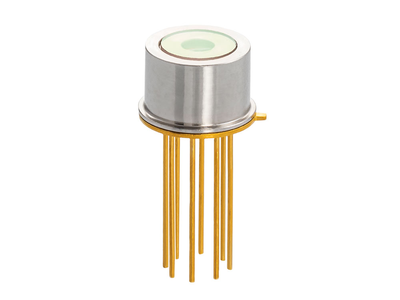
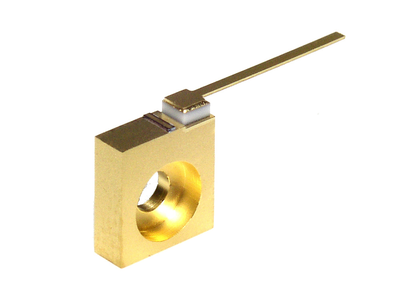

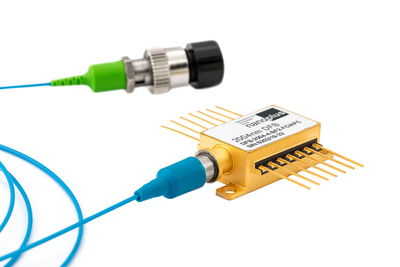
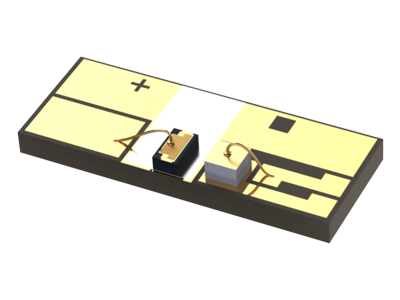
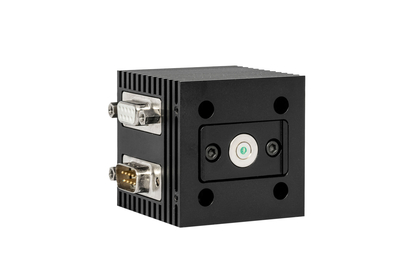
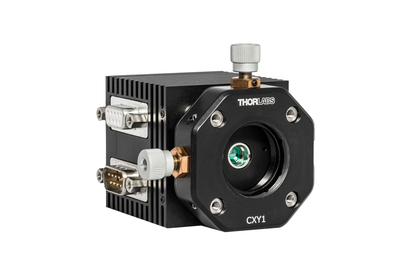
Greenhouse gas effects and climate change have triggered global emission monitoring of pollutants like methane. Methane is one of the Earth’s most important atmospheric gases. It is, to a large extend, responsible for the accelerating greenhouse effect. The global warming potential of methane is about 30 times higher than that of CO2 based on a 100 year scale. Studies are executed on behalf of the US Environmental Protection Agency to quantify the methane emissions caused by the increased natural gas exploration and production in the US.
[ 206 , 198 , 189 , 188 , 187 , 178 , 176 , 162 , 146 , 142 , 141 , 129 , 128 , 119 , 109 , 107 , 92 , 61 ]Leaks of CH4 may cause dangerous situations and are hard to locate precisely. Hence, maintenance of underground pipelines produces high costs. CH4 leaks are also an important source for greenhouse gases. With TDLAS a strong tool is available to manufacture portable leak detectors.
[ 162 ]Methane content of syngas is controlled to improve combustion efficiency of integrated gasification fuel cell cycles.
[ 35 ]Continuous monitoring of contents like CO2 or CH4 concentrations is essential for the efficiency of high-temperature processes in e. g. incinerators, furnaces or petrochemical refineries. Managing the CO2 content in combustion processes simultaneously reduces greenhouse gas emissions. This is also relevant for energy generating industries like coal burning power plants.
[ 154 , 124 , 121 , 115 , 112 , 111 , 96 , 94 , 62 , 45 , 40 , 35 , 12 ]nanoplus distributed feedback lasers show outstanding spectral, tuning and electrical properties.
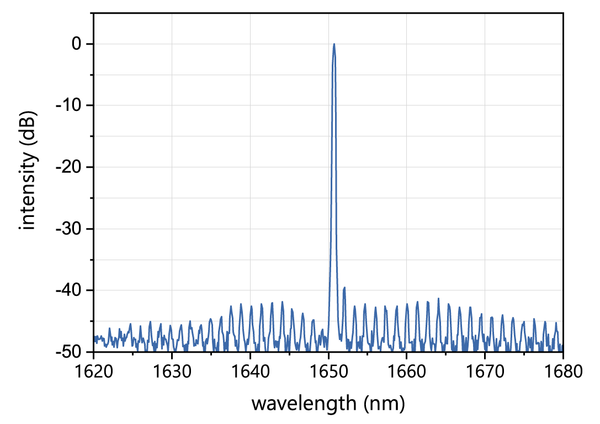
Typical spectrum of a nanoplus 1651 nm distributed feedback laser diode

Typical mode hop free tuning of a nanoplus 1651 nm distributed feedback laser diode

Typical power, current and voltage characteristics of a nanoplus 1651 nm distributed feedback laser diode
nanoplus uses a unique and patented technology for DFB laser manufacturing. We apply a lateral metal grating along the ridge waveguide, which is independent of the material system. Read more about our patented distributed feedback technology.
